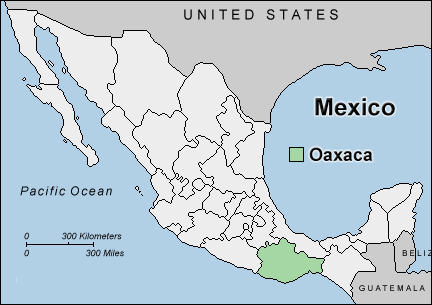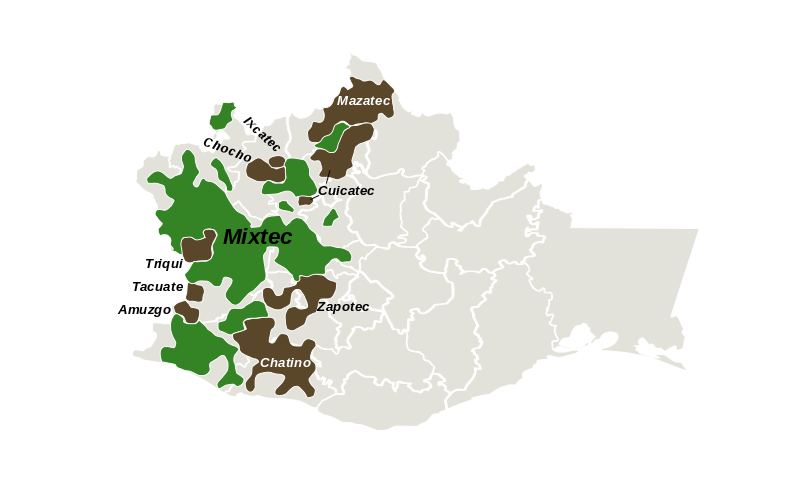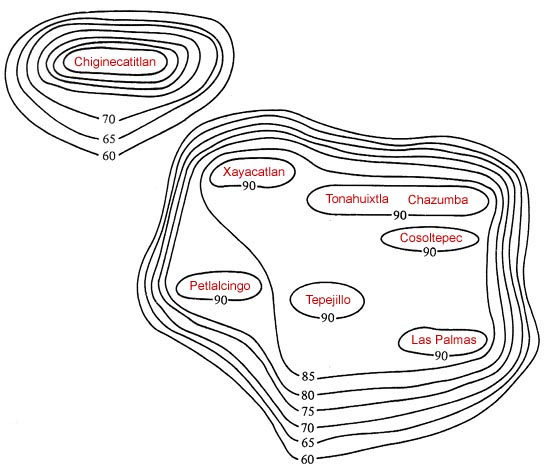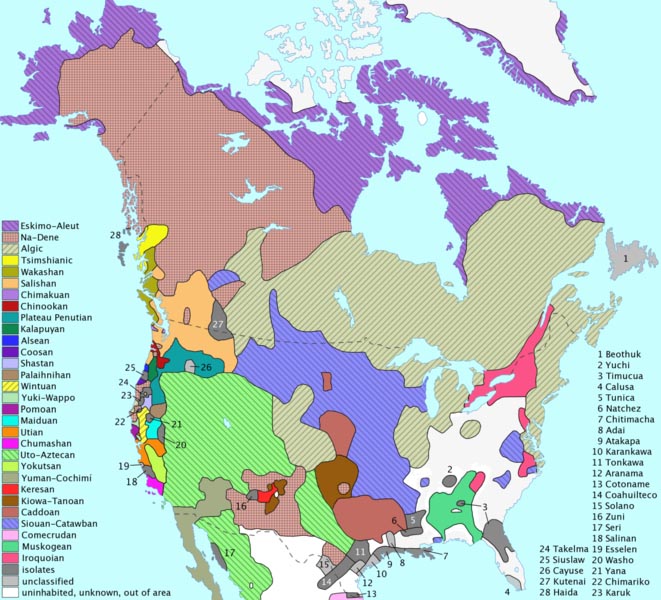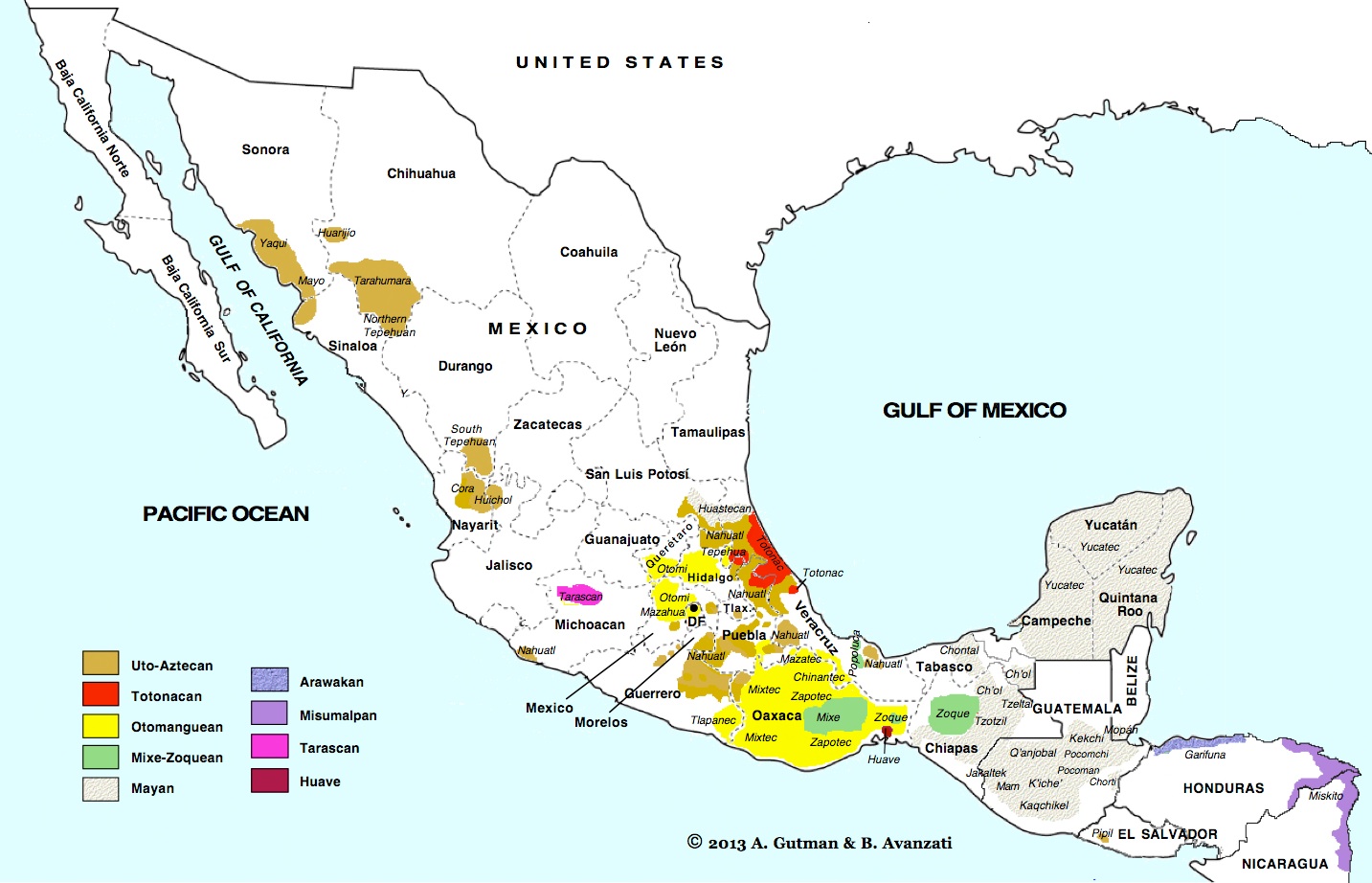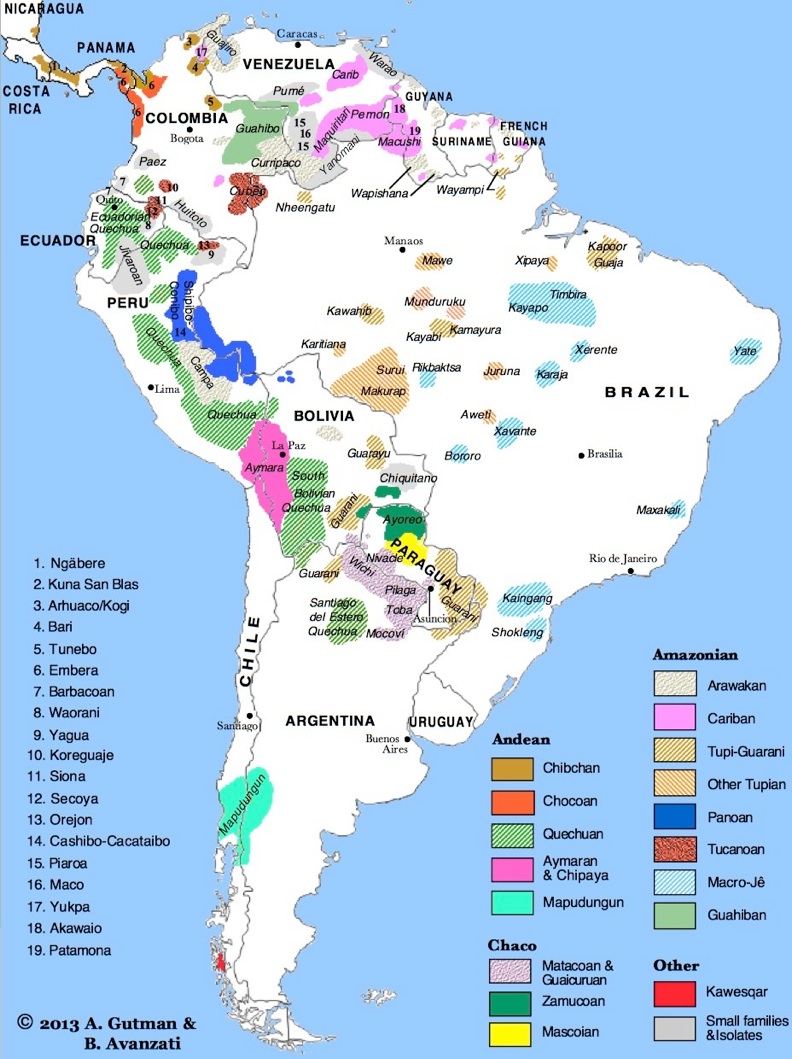|
By contrast with North America, there are various languages in Latin America with
far more speakers than any indigenous language in North America. These are
the languages with at least
100,000 speakers in Mexico; some are closely related to others
but sufficiently distinct to be classified as separate languages.
Of the population of 105 million, about 8% or
more than 8 million speak an indigenous language.
| 700,000 |
Maya, Yucatán |
130,000 |
Nahuatl, Southeastern Puebla |
| 410,000 |
Nahuatl, Eastern Huasteca |
125,000 |
Nahuatl, Highland Puebla |
| 400,000 |
Nahuatl, Western Huasteca |
120,000 |
Nahuatl, Orizaba |
| 350,000 |
Mazahua Central |
120,000 |
Purepecha |
| 200,000 |
Nahuatl, Central Huasteca |
120,000 |
Totonac, Highland |
| 150,000 |
Nahuatl, Guerrero |
100,000 |
Otomi, Mezquital |
| 130,000 |
Tzotzil, Chamula |
100,000 |
Tzeltal, Bachajón |
The figures come from the Ethnologue.
A few Mayan languages in Guatemala also
surpass 100,000, most dramatically Central
K'iche' with 1,900,000 (which appears to be the 4th largest
indigenous language of the Americas; see below). Few other languages
of Central America reach these sizes, such as Mískito with
154,400 in Nicaragua and Honduras; many others have at least
10,000 speakers, such as Kekchí (Maya)
with 12,286 in El Salvador and 9.000 in Belize, not to mention a
good number of other languages in Mexico. |



